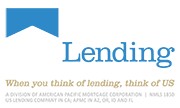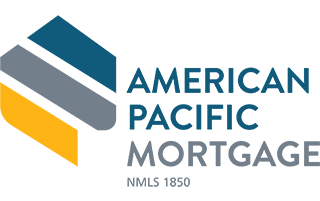The Defining Differences Between a Home Equity Loan & a Home Equity Line of Credit
When people want to use their home as a financing advantage or leverage, a number of options are available. However, the processes, results, costs and fees are tremendously different, each with advantages and disadvantages. Much of this is procedural; the core source of the funding is the equity one owns in his or her home. However, many different processes have been created by the private market for how one gets from financing point A to point B.
The first step to remember, however, is that the owner needs to have equity to begin with. As a reminder, equity is the amount of actual ownership an applicant has in an owned home. This comes from either buying the property in cash or paying down the mortgage over time after buying a property with a home loan. For example, if your home cost $200,000 with a $20,000 down payment and you paid the mortgage down over time by $80,000 then you owned $100,000 in equity. It is the actual amount of outright ownership by purchase you have in the home. Without a sizable amount of equity it is not possible for an applicant to get started with either a home equity loan or a home equity line of credit. Lenders will have nothing to work with as collateral. So, assuming sufficient equity is in place, one may begin to understand the differences between the two.
What’s a Home Equity Loan?
A home equity loan is, fundamentally, a mortgage against an owned home. If the home already has a mortgage, then the equity loan becomes a second mortgage on the same home. But otherwise both loans have a lot in common. They both use the home as collateral, they both have to be paid monthly, and they both have a low interest due to being secured by the home.
Key Features of a Home Equity Loan
The equity loan is very standard in construction. It comes with a fixed lump sum at closing, a fixed term of payment, a fixed interest rate over the life the loan, and the loan amount does not increase after origination. As the loan is paid down, it decreases until such time that it is completely paid off. They are very predictable and fit well in long-term planning needs such as putting in a pool, paying for college, or adding an addition to a home. Lastly, the monthly amount paid back doesn’t change, being an even amount until paid.
What’s a Home Equity Line of Credit?
The home equity line of credit or HELOC is more similar to a credit card than a traditional loan. With this vehicle, the home equity is used to guarantee the borrowing, and then the applicant is given an approved amount to spend up to. The borrower does not need to withdraw the full amount, and as the funding borrowed is paid back, then it becomes available for more borrowing. This type of equity loan works very well with ongoing construction projects in a home, repetitive borrowing needs, or flat out replacing a regular mortgage.
Key Features of a Home Equity Line of Credit
Because the HELOC is a revolving credit loan, a key benefit is the ability to use it more than once. A traditional loan can only be borrowed once, and then the borrower has to apply for a new loan. HELOCs also provide a far lower interest rate than regular credit cards because the borrowing is secured to the home. Finally, HELOCs can stay in place for years, as long as the borrower maintains good credit history, pays on time, and the borrowing is not abused. Unlike traditional equity loans, however, HELOCs typically come with variable interest rates, which can cost a bit more than a straight equity loan. This is because lenders are keeping borrowing open and need to tie the new lending to current market rates.
How Exactly are Home Equity Loans and Home Equity Lines of Credit Different?
In addition to how the borrowing works in terms of frequency of availability and recurrence, an equity loan and a HELOC have differences in their application approval fees as well. Both have origination fees but the amounts can vary between the two categories. Further, because the HELOC can be reused, each withdrawal sometimes triggers a new transaction fee, depending on the bank.
Understanding the Difference in Interest Rates
Again, the HELOC tends to be approved with a variable rate and the equity loan tends to be fixed. The variable rate moves up and down with the overall market. The fixed rate stays the same throughout the life of the loan. It can be hit and miss as to which one saves money, but the fixed approach appeals better to those who want predictability. The variable rate favors those who see the advantage of short-term variabilities in the market.
Understanding the Difference in Repayment Policies
Some loans pay over time and the life of the loan. And some pay minimally and then have a large payment at the end of the loan, a balloon payment. Which one works really depends on the borrower’s needs and wants.
It’s always smart to remember that one’s home is the collateral on any type of equity loan, and will be attached with a lien if the loan is not timely paid. That could force a sale of a home in a bad situation. So, borrowing what is manageable and can be afforded is key to never-ending up in this situation.
So, Home Equity Loan or Home Equity Line of Credit?
There is no default answer that works for everyone all the time. Much depends on what a borrower needs an equity loan for that typically leans the borrower to a given category. However, both tools are available with sufficient equity in play. For example, a borrower could use an equity loan to pay for a child’s college and put the funds in the bank until needed. But that means paying interest until the amount is repaid. Conversely, the borrower could use a HELOC and only borrow what is needed semester by semester, not borrowing more or paying interest on it. However, more fees are possible due to more transactions. Again, it depends on what a borrower needs case by case.
When a Home Equity Loan Makes Sense
A number of big issues tend to make an equity loan far more attractive. The first big one involves consolidation of personal debt and credit cards. Clearly, everyone knows consumer debt can be expensive, and a secured loan is far cheaper with a lower interest rate. Consolidating these various bills into an equity loan stabilizes the owner’s debt, improves a credit rating with a secured loan, and lowers the interest rate cost on the same debt amount, saving money. A second reason the equity loan is favored is due to its predictability for those on a fixed income and who can’t deal with changes from year to year in monthly costs. A third reason may be travel with a large price tag. Many folks just going into retirement use an equity loan to pay for a big blow out trip before their life change to enjoy an extended vacation. Typically such trips need a lump payment up front, which an equity loan matches better.
When a Home Equity Line of Credit Makes Sense
A HELOC makes a lot more sense when the scale, scope and different payments involved with a project are not known right up front. Secondly, a borrower may not want to use all the funds right away but still needs to have the borrowing power over an extended period of time. Staged renovation projects, school costs, other segmented costs all match the purpose of a HELOC a lot better than a lump sum loan under a traditional model.
Final Takeaway
Equity can be a powerful personal finance tool, but in today’s consumer market there are multiple ways to go about getting to it. The key factor for the borrower getting started is to do his homework on how each tool works and functions. Knowing which tool matches one’s expectations will save a lot of headaches and disappointments later on.
The views, articles, postings, and other information listed on this website are personal and do not necessarily represent the opinion or the position of American Pacific Mortgage Corporation or US Lending Company.
* For loan examples and more information visit our disclosure page at https://www.uslendingcompany.com/disclosures/





